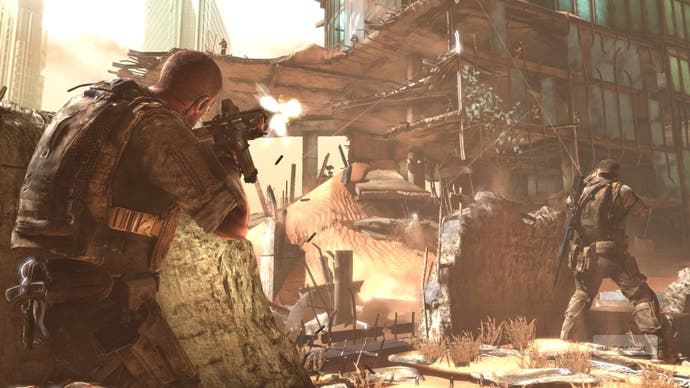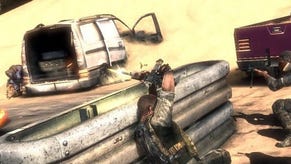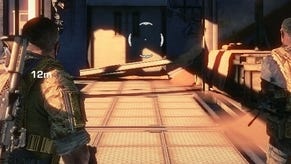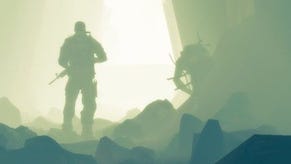Spec Ops: The Line
SandShock?
Basing a third-person cover shooter on a late 19th-century literary classic might sound a little pretentious, but Yager's confident that its set-piece heavy, structured narrative approach will result in an involving and impactful story, complete with "morally grey areas" and some big decisions. In one area a young woman races around the corner directly into the player's line of fire just as an assault begins on the refugee camp you're exploring. Presumably itchy trigger fingers would see her having a pretty bad time of it, but what effect this might have on your squad or the refugees around you is kept under wraps.
It's unclear whether these decisions will actively branch the story, or whether they affect the character himself in a more encapsulated way - sending him down paths towards light or darkness of the soul. What we're assured is that these choices, and the situations which frame them, will affect both the character and player in intense and important ways. In the words of lead designer Corey Davis, "A game can look great, a game can even play great, but if you don't feel anything about the environments, characters and events in the game, then it's all just popcorn bulls***."

The demo we see opens amongst a few stunted ruins, as Walker picks his way carefully towards a man hung upside down in front of an inverted US flag. Reaching behind him to turn off the trooper's radio, Walker realises this is a member of the first squad sent to rescue Conrad, a message which brooks no misinterpretation. As the realisation dawns, the trap is sprung - several enemy troops appear on the shattered floors and roof of the adjoining building, peppering Walker and his squad with small-arms fire.
The tactical nature of the shattered environment is immediately apparent as troops appear at broken windows and slide down slopes of sand, and enemies also rappel from their elevated positions, picking their way across the intervening ground and the sparse cover it provides. After pulverising a few of them, Walker's squad seems to be getting the upper hand. There's a shout from a team-mate, however - an RPG team has appeared on the roof, loosing a round before the Delta operators get a chance to eradicate him.

All that sand, it turns out, is more than just fancy visual juxtaposition. The rocket streaks toward your position and hits a piece of cover just in front of one of your compatriots, knocking him to the ground. In true videogame fashion, he's pretty much unhurt, but as he struggles to his feet something unusual happens: the sand around him begins to swirl, like water in an emptying bathtub, dragging him downwards. This is no minor landslip either, as more and more is sucked into the sinkhole. Soon your buddy is dragged completely out of sight, as tons of sand drain from the environment. The ground beneath Walker's feet quickly follows suit, and your character is left dangling from the scenery by one arm, blindfiring at the last few tangos before he eventually drops from the remnant of wall into the darkness below.
A few seconds later, when the dust settles and your eyes peel open, it transpires that what was once a floor is now a roof, a glass atrium for the lobby of a luxury hotel shattered by the rocket fire. Not only does this shift in perspective offer the opportunity for an interesting set-piece and change of pace, it also adds a new tactical element - your enemies are now above you and dropping C4 charges into the lobby. Time to find an exit.








